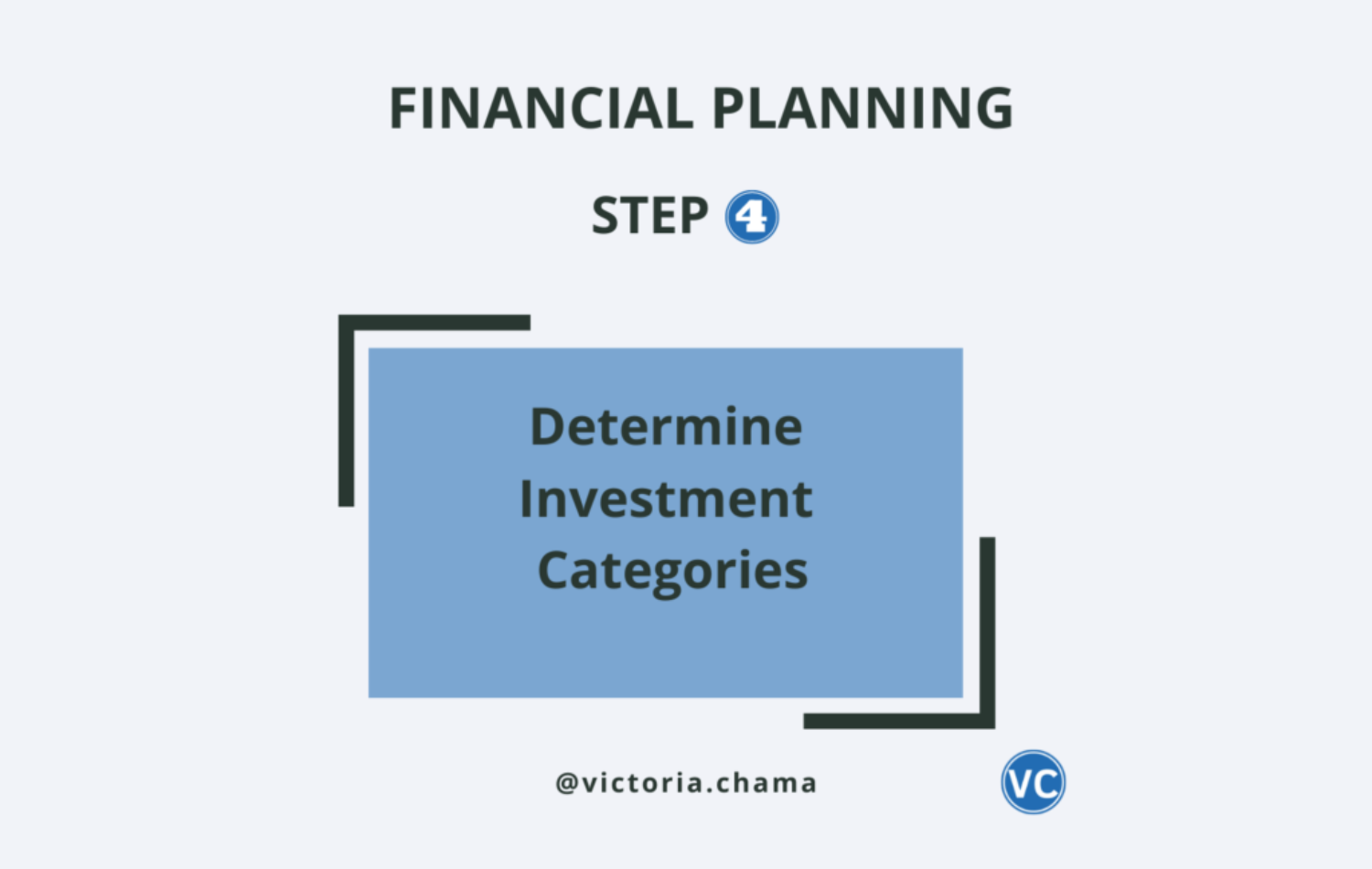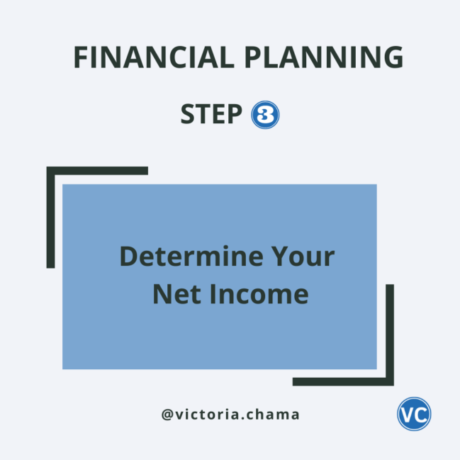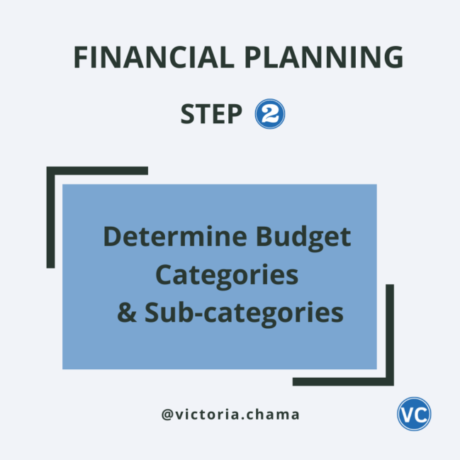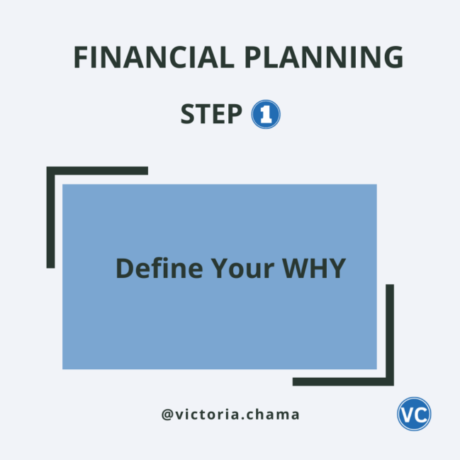Financial Planning – Step 4 – Determine Investment Categories
1. Introduction to Investing
When determining which investment categories to choose, it is essential to consider the following:
- Your Individual Needs
- Your Goals
- Risk Tolerance.
If you have a background in finances you are probably thinking “isn’t it too early to be thinking or planning out your investments”. I totally agree with you on that. At this point in your financial plan, you should be probably setting your financial goals. Typically these are your short, medium and long-term goals. Stick with me for a moment, we are definitely going to do all of that, however, for now, I want us to discuss and acknowledge investing as one significant component of wealth creation and how we are going to realistically infuse our investing goals in our typical “Financial Goals”.
Investing 101
Investing is a great way to increase your financial security and prepare for the future. It involves putting your money into assets such as stocks, bonds, mutual funds, and other investments with the goal of increasing your wealth over time. Investing can be intimidating at first, but with the right knowledge and resources, anyone can learn how to invest and potentially reap the rewards.
Before you make your first investment, it is important to “invest” in knowledge and financial education. Understanding the basics of investing, such as the different types of investments, the risks and rewards associated with them, and how to create and manage a portfolio, is essential to becoming a successful investor. Investing can be a great way to build wealth and achieve financial freedom with the right approach.
It would be best if you also researched different types of investments and their potential returns. For example, some investments may be more suited for long-term goals, while others may be better for short-term goals. Finally, it is important to diversify your investments to spread out the risk and ensure that you are not putting all of your eggs in one basket.
2. Investing Options in Zambia
The great thing about finances, specifically investing is that they are fundamentally identical regardless of where you find yourself find the world. The only things that might differ are the systems used, the information available, the names of the assets, maybe the laws surrounding a particular investment option and the governing bodies and also the supporting infrastructure.
But other than that, investing categories are the same regardless of country. The reason I am bringing investments at this point in your financial planning is that it is easy to overlook the necessary steps that you need to start working on now so that in five or ten years’ time your monthly actions will have the chance to compound and get you where you want to be after five or ten years.
Creating one-year savings goals is intuitive and easy to plan. However, making the transition to investing is not that intuitive and also not widely emphasized. Hence, my decision to highlight investing early on in your planning.
The point at this step is to start learning about Investing and getting started EARLY
In Zambia, we have 7 main investing options:
- Stocks
- Government Securities (Government Bonds & Treasury Bills )
- Businesses
- Fixed Deposits
- Real Estate and Land
- Unit Trusts
- Livestock
I must mention that you do not have to have all the investment types listed above in order to grow wealth. However, what I do emphasise is that you should be aware of the different options, educate yourself about them and then choose which investment categories will work for you according to your goals and risks.
3. Which Investing Categories to Start With
From my own personal experience with investing, the following are my recommendations on which investment options to start with:
- Unit Trusts
The reason I recommend Unit Trusts is because of their low minimums and also the fact that you can immediately start compounding your contributions. The learning curve with this type of investment is not steep either and a really gentle introduction to investing.
- Stocks
My second recommendation are Stocks because they also have low minimums. However, they are high-risk investments and also have a steep learning curve. But once you do, you will slowly educate yourself about other aspects of investing in Stocks.
I have Investing self-paced investing classes which you can sign up for so that you start your learning process. You can simply contact me via WhatApp using this LINK or use the WhatsApp Button you see at the bottom of the blog.
4. Enter Investment Categories in Wealth Dashboard
Just like you entered information in Step 3, the next step is to finalise and enter your desired Investment Categories. You do not need to start with all 7 investing options, what you can decide is to focus on one or two categories and then slowly begin to introduce the rest. Your dashboard will look like the image below
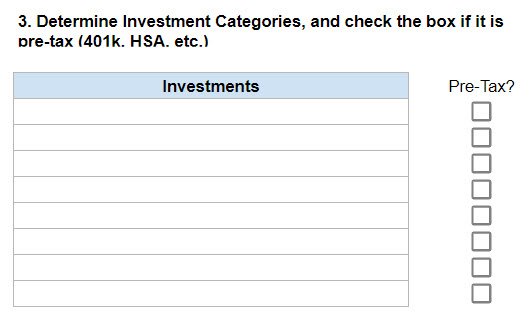

The great thing about the Dashboard is that, should you decide to add another investment option, you simply go to the input tab and add it. Now you will be able to budget and track your progress.
5. Actionable Tasks
The actionable task for this step are going to be an ongoing exercise until you find that sweet spot of knowing
- What are your overall financial goals?
- How do you intend on living your life using the money you have accumulated
- How much risk you are willing to take
- How quickly do you want to hit Financial Freedom
As per “tradition” the following are the tasks that you need to complete. After you finish a task, you can tick it off just to help you keep track of what you have done and what else is pending.
Only 2 more sections to go. But because the actual Financial Plan is broken into 3 main parts. It will basically complete the remaining 2 sections left in the Wealth Dashboard. Keep going 👏👏👏
Don’t keep Planning to INVEST. Take Action Instead
